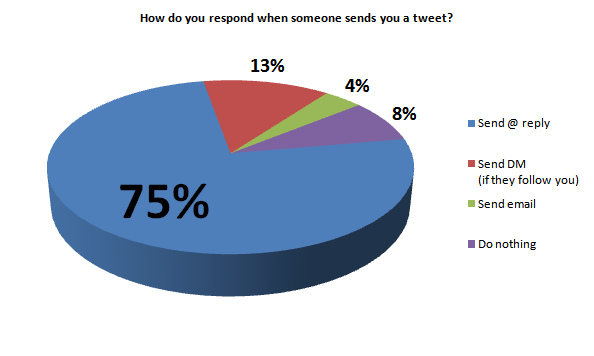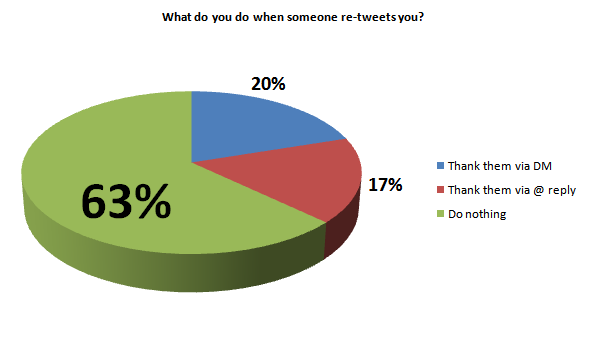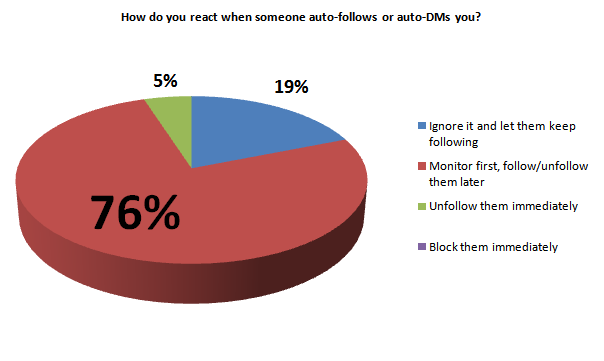With rapid speed, Twitter is becoming as ubiquitous as Google. While both Web tools’ brand names have also turned into verbs, the main difference between the two is that while Google is a one-way interaction, Twitter is two-way: with Twitter, you’re interacting with people, not just a technology. When you interact with people, it behooves you to have a modicum of etiquette, and since Twitter is a “thin” communication channel in that you only have 140 total characters to get your point across, I’ve found it fascinating to observe people’s Twitter etiquette, or Twetiquette.
My observations started out as nothing more than sheer curiosity and an interest in being a better “Tweep” (aka Twitterer or Tweeter). What were people tweeting? How were they tweeting it? How were they responding to @replies (tweets directed to a particular individual) and did that make any sense? What I started to notice was that replies from certain individuals made all the sense in the world, while others – particularly the very brief responses – were even hard to decipher if you were on the receiving end.
The problem, I feel, results from a combination of factors:
- The ease by which Twitter makes communication possible (it’s kind of like instant messenger).
- The possible time delay within which people respond (Twitter is NOT instant messenger).
- The fact that everyone can read your tweets, but not the entire context of your thread.
- That darn 140-character limit!
It’s that 140 character limitation that makes studying Twitter within the context of itself even more challenging, but also kind of fun. I’ve taken to hosting a weekly poll to help get a pulse on various topics. By no means are my polls scientific and nor do they represent the masses, but until there’s some major study done to prove or disprove my learnings, I’m comfortable using them as a bell weather.
What have I found so far? Some key highlights & observations:
Send a public message, get a public message
Exhibiting common courtesy, overwhelmingly, Twitter users say that if someone tweets them first, they will respond with a simple @ reply (75 percent). In both instances, both messages are broadcast publicly for all to see. Some (13 percent) might reply with a direct message (DM), but there could be several rationales for this: 1) they might want to express something personal; 2) they might be less comfortable responding in public. Some users never respond, probably because they’re not really courting a dialog; they’re “broadcasters” and spend most of their time tweeting original content, whatever the nature of it may be. Email is the least popular means of response. Very rarely will Twitter users send email in response to tweets, though in these instances, there’s obviously a pre-existing relationship, and the use of email is probably to work around the 140 character restraint.
Tweet someone else’s tweet (retweet, aka RT), but don’t expect much in return
As Guy Kawaski (@guykawasaki) wrote in his helpful read, How to Get Retweeted, “Today, the sincerest form of flattery is retweeting—the process of forwarding someone else’s tweet to your followers on Twitter. The reason that retweeting is so flattering is that every time people do it, they are putting their reputation on the line. If their followers don’t like the retweet, their reputation is reduced. So whenever someone retweets your tweet, they are expressing confidence that what you’ve tweeted is interesting and good.”
That being said, one would think that good etiquette would dictate that a thank you – or at least an occasional thank you – would be in order for such a vote of confidence. Instead, 63 percent of our our poll respondents said that most of the time when someone retweets them, they do absolutely nothing! Of those that do send thanks, a DM thanks wins slightly over an @ reply.
The auto-follow/auto-DM isn’t any better or worse than any regular new follow
This came as a surprise to me. As someone who can usually sniff out automated responses of any kind (and I don’t typically respond well to them – I’m looking for genuine interactions not mass quantity), I thought our responses would be more to one or the other extreme. Instead, it seems, most Twitter users will still monitor Tweeps using these automated solutions, refraining from judgment until some time passes and they can determine if that person is worthwhile to follow. And not a single respondent said they’d block this kind f follower immediately.
If this is the attitude, I guess we can expect to see a lot more of these automated solutions put into everyday practice.
People tweet whenever they feel like it, not in any kind of strategic way
Although they ought to be if planning to use Twitter as a business tool, most tweeps do not strategically time the posting of their tweets. What does this have to do with Twetiquette? Everything, if you’re trying to get your tweets read and retweeted. For those wondering if or how strategically-timed tweets make a difference, I’m guessing you’re not using a trackable URL shortening solution like cl.ig, tr.im, ow.ly, budurl, etc. These solutions can give you all sorts of great data to help you analyze not only the timing of your tweets, but the subject matter, audience location, and more. If this matters to you, Twetiquette-wise, perhaps it will get you to think first before you tweet!
Have my findings about Twetiquette made you more curious too? Help me expedite the learning process by taking our Twetiquette survey right now. Our additional findings will become Part Two! Oh, and of course, please retweet this article and/or our survey link so we can really get some good responses to share – thanks!
Comments(6)6 Comments »
Leave a comment
Web Ad.vantage is a full-service online marketing company with core competencies in search engine optimization, PPC Campaign Management and online media buying. Visit our Internet Marketing Services section to learn more about our full range of services.
WebAdvantage.net encourages the reprinting of our marketing tips and articles. Before doing so, however, please contact us at for permission to do so. The company bio located above is required to accompany any reprint. Thank you in advance for your professional courtesy.
Pragmatic, professional advice with no hidden agenda.

Internet Business Forum









 back to top
back to top







very thoughtful post - it can be challenging to describe twitter to someone that has never used it before and convey why the person should even care about it. its like one of those “you had to be there to get it” stories. i’ll be awaiting part deux!
The idea of twetiquette is a great one from a marketing point of view. It is refreshing AND surprising to see that most people do not have a strategy or a set plan for their tweets or retweets. Although this makes better sense in building a personal brand I’d rather that people who position themselves as experts in a certain field do not dilute their brand by tweeting irrelevant things.
My questions about Twetiquette go outside the above. For instance, when is it appropriate to retweet and when to take the link and make it your own? I received a tweet to a site that fits in with “my tweeting scheme,” but the original tweet carries a disparaging remark I don’t want to RT, or would feel I need to rebut. Rather than RT, should I tweet it myself and perhaps shoot a reply to the original thanking him for the pointer?
In fact, in retweeting this article (as you ask), should I RT the original that led me here, or tweet it on my own?
Comment by Mike Keller — March 30, 2009 @ 11:34 am
Thanks to Tracy, Vishal & Mike so far for their comments.
To Mike’s additional Twetiquette questions, we actually try to address that in the survey so if you haven’t done so already, please take it: http://tr.im/i0mP. I plan on writing a Part Two article in large part based on the responses we get to this survey.
I am not sure what the point of “broadcast Tweeting” would be. Unless you are actively participating in conversation with your community, you might as well just send them an email. Or be a celebrity!
Comment by John Welsh/These Digital Times — March 31, 2009 @ 7:07 pm
It would be interesting to read the survey results if one could poll age, level of education and professional field.